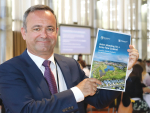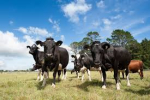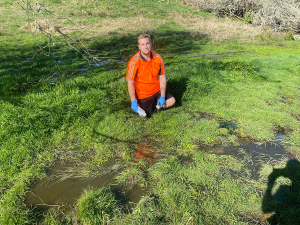All resilient farm systems need to be low cost, says DairyNZ principal scientist John Roche.
"It doesn't need to be a particular system but whatever way they farm they need to be low cost," he told Dairy News.
"Volatility is the new norm – we need to be able to farm within that volatility."
Roche this year published a paper on 'Resilient farming systems – surviving volatility' with Brendan Horan from the Animal and Grassland Research and Innovation Centre in Ireland. Roche presented key findings at a recent Northland Agricultural Research Farm (NARF) field day.
Roche has seen a lot of attention to his previous comments about rising feed costs eroding New Zealand's competitive advantage. But in Northland he talked about the whole concept of resilient systems, which are possible every year – not just when milk price is high, he says.
"They need to be environmentally benign, they need to allow sufficient time out for everyone in the business. On the human resource side we focus very much on staff by means of timesheets etc. But the sharemilker or farm owner also needs sufficient time off."
Resilient systems need to generate sufficient cash in the good years to take advantage of the opportunities which generally arise in the bad years, he says. "The balance sheet has to be in [a state] to take advantage of opportunities when they come up. That was our definition of a resilient system.
"Resilient systems maximise the productivity of all the resources in the business – land, cows and the people and people skills."
It avoids a boom and bust situation, he says. "The DairyNZ mantra at the moment is 'thrive at five'. If you can thrive at the $5/kgMS payout you can survive at the $4/kgMS payout," he says.
A NARF trial which began in June this year looks at how to limit the exposure of the business to external feed costs.
"We already are exposed to the milk price and we can't do anything about that but if we set up a system to allow for a lot of feeds purchased we can get caught between a low milk price and high feed costs," he says. "So the Northland situation is trying to look at stabilising the feed supply."
The trial looks at three systems: all pasture with no supplements, all supplements grown onfarm and all supplements purchased and brought in.
In the trial where all feed is grown onfarm they have turnips through late December-January and maybe into February; fodder beet through February-March into April; maize silage through April, May and June – with pasture as a base also during those months, then pasture as the primary feed through winter, Roche says.
The need is to stabilise the feed supply onfarm rather than having to buy it in, Roche says.
No economic results are available yet from the trials.
"It will run for three years to make sure we cover different biological years and different milk price years so we will get a good impression of the likelihood of these different farming systems in the long run," he says.


















